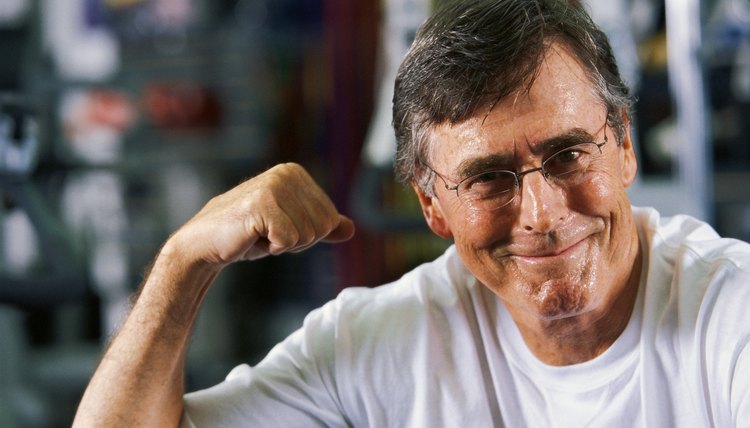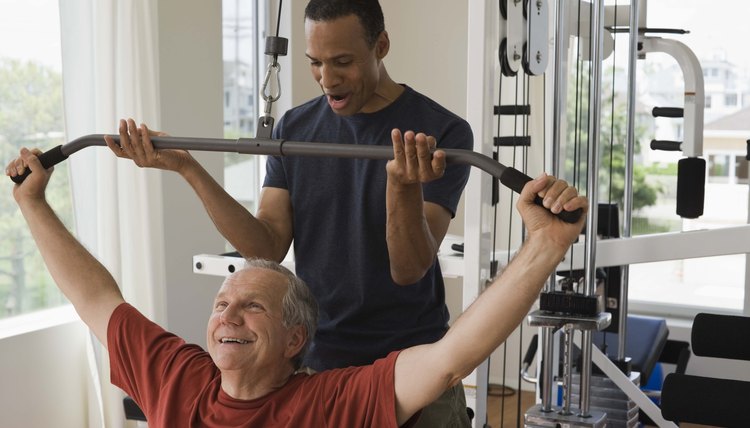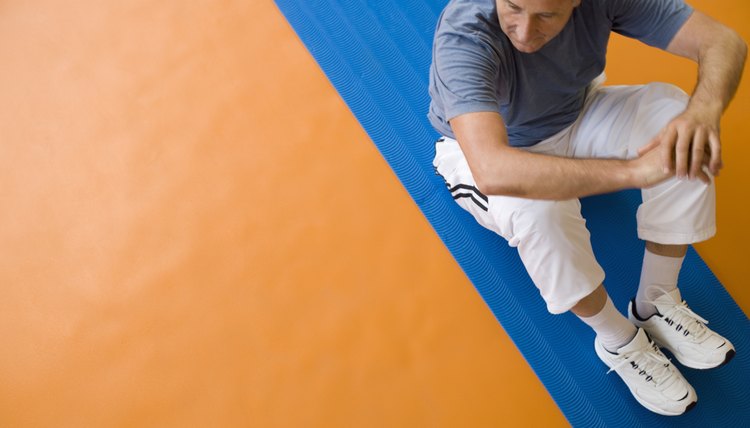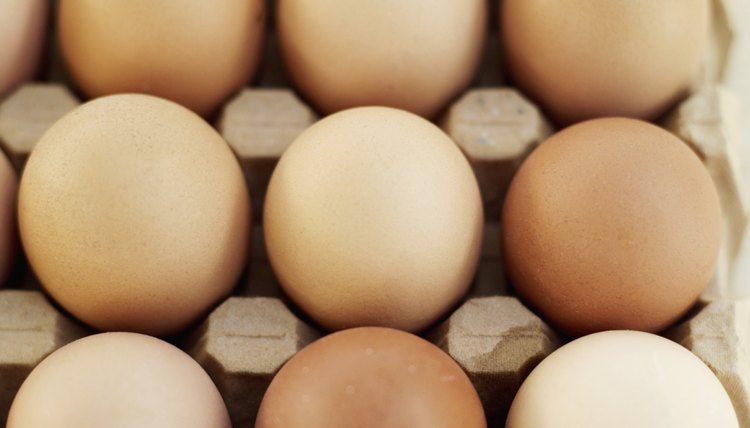What does fact checked mean?
At SportsRec, we strive to deliver objective content that is accurate and up-to-date. Our team periodically reviews articles in order to ensure content quality. The sources cited below consist of evidence from peer-reviewed journals, prominent medical organizations, academic associations, and government data.
The information contained on this site is for informational purposes only, and should not be used as a substitute for the advice of a professional health care provider. Please check with the appropriate physician regarding health questions and concerns. Although we strive to deliver accurate and up-to-date information, no guarantee to that effect is made.
How to Build Muscle Mass at Over 50 Years Old

Building muscle mass when you're over 50 years old essentially requires a proper diet, hard work and proper supplements. The difference when building muscle now compared to when you were younger is the recovery process. Your muscles are made larger through your body recovering from the strain exercising puts on it, and a body over 50 years old does not recover as fast as a younger body.

Comstock/Comstock/Getty Images
Take creatine supplements to build mass more quickly. Creatine is a substance that is found naturally in the body and is a safe supplement to take as long as you follow the directions on the label and research possible side effects (see resource below.) Creatine will make you stronger not because of added muscle, but because it fuels your muscles. The increase of size gained from creatine is a result of extra water retention. Creatine will make you look bigger and allow you to work out harder, so make sure to drink plenty of water while taking creatine.

Comstock/Comstock/Getty Images
Lift heavy weights. If you can lift a weight eight times or more, then it isn't heavy enough. Lifting light weights does not cause enough stress to gain mass. Muscle gain is a byproduct of stressing your muscles, and when you lift heavy weights, tiny little tears occur in your muscles. Your body then repairs your muscles, making them bigger than they were before, so they will be able to take the stress the for the next workout.

Comstock/Comstock/Getty Images
Perform an upper body workout consisting of tricep pull downs, bench press, shrugs, shoulder raises and seated rows. Perform a lower body workout consisting of squats, calf raises, leg extensions, and bicep curls. There are more major muscles to be worked in the upper body, so biceps need to be included in the lower body workout to balance the work load between the two workouts. To eliminate the chance of over-training, do not work any upper body muscles in the lower body workout with the exception of biceps.

Comstock/Comstock/Getty Images
Eat protein. Your muscles are made of protein, so it takes protein to gain muscle and build mass. To determine how much protein you should eat, multiply your body weight by 1.6, the resulting number is the amount in grams of protein you should eat per day. Do not eat more than 40 grams of protein in one sitting as your body cannot metabolize that much protein that fast. Eat six meals, spaced 2 to 3 hours apart, throughout the day.
Rest each muscle group for 48 hours between workouts. Muscles grow during the recovery process, so it's important to optimize the amount of time you give your body to recover. Working out the same muscles in consecutive days will yield limited results.

Comstock/Comstock/Getty Images
Take glutamine supplements. Glutamine is another perfectly safe supplement like creatine, but it works in a different way. Glutamine helps repair your muscles after workouts. When you're over 50 years old, it's especially important to repair your muscles as completely as possible between workouts. Recovery is important for building mass because muscles are built stronger during the recovery process.
Warnings
Use a spotter whenever possible when you are lifting heavy weights. Do not perform exercises that cause pain to your joints. To relieve joint pain, supplement your workouts with glucosamine and chondroitin.
References
- University of Maryland Medical Center: Glutamine
- Medline Plus Medical Encyclopedia: Protein in diet
- Kreider, R. B., Kalman, D. S., Antonio, J., Ziegenfuss, T. N., Wildman, R., Collins, R., ... & Lopez, H. L. (2017). International Society of Sports Nutrition position stand: safety and efficacy of creatine supplementation in exercise, sport, and medicine. Journal of the International Society of Sports Nutrition, 14(1), 18.
- Hoffman, J., Ratamess, N., Kang, J., Mangine, G., Faigenbaum, A., & Stout, J. (2006). Effect of creatine and beta-alanine supplementation on performance and endocrine responses in strength/power athletes. International Journal of Sport Nutrition and Exercise Metabolism, 16(4), 430-446.
- Grindstaff, P. D., Kreider, R., Bishop, R., Wilson, M., Wood, L., Alexander, C., & Almada, A. (1997). Effects of creatine supplementation on repetitive sprint performance and body composition in competitive swimmers. International Journal of Sport Nutrition, 7(4), 330-346.
- Cooke, M. B., Rybalka, E., Williams, A. D., Cribb, P. J., & Hayes, A. (2009). Creatine supplementation enhances muscle force recovery after eccentrically-induced muscle damage in healthy individuals. Journal of the International Society of Sports Nutrition, 6(1), 13.
- Ziegenfuss, T. N., Lowery, L. M., & Lemon, P. W. (1998). Acute fluid volume changes in men during three days of creatine supplementation. Journal of Exercise Physiology, 1(3), 1-9.
- Whyte, L. J., Gill, J. M., & Cathcart, A. J. (2010). Effect of 2 weeks of sprint interval training on health-related outcomes in sedentary overweight/obese men. Metabolism, 59(10), 1421-1428.
Writer Bio
Jason Cooley began writing in 2005 as the owner of a personal-training business, authoring advertising copy and business contracts. He has since served as a writer with Oral B and On Top of My Diabetes.
